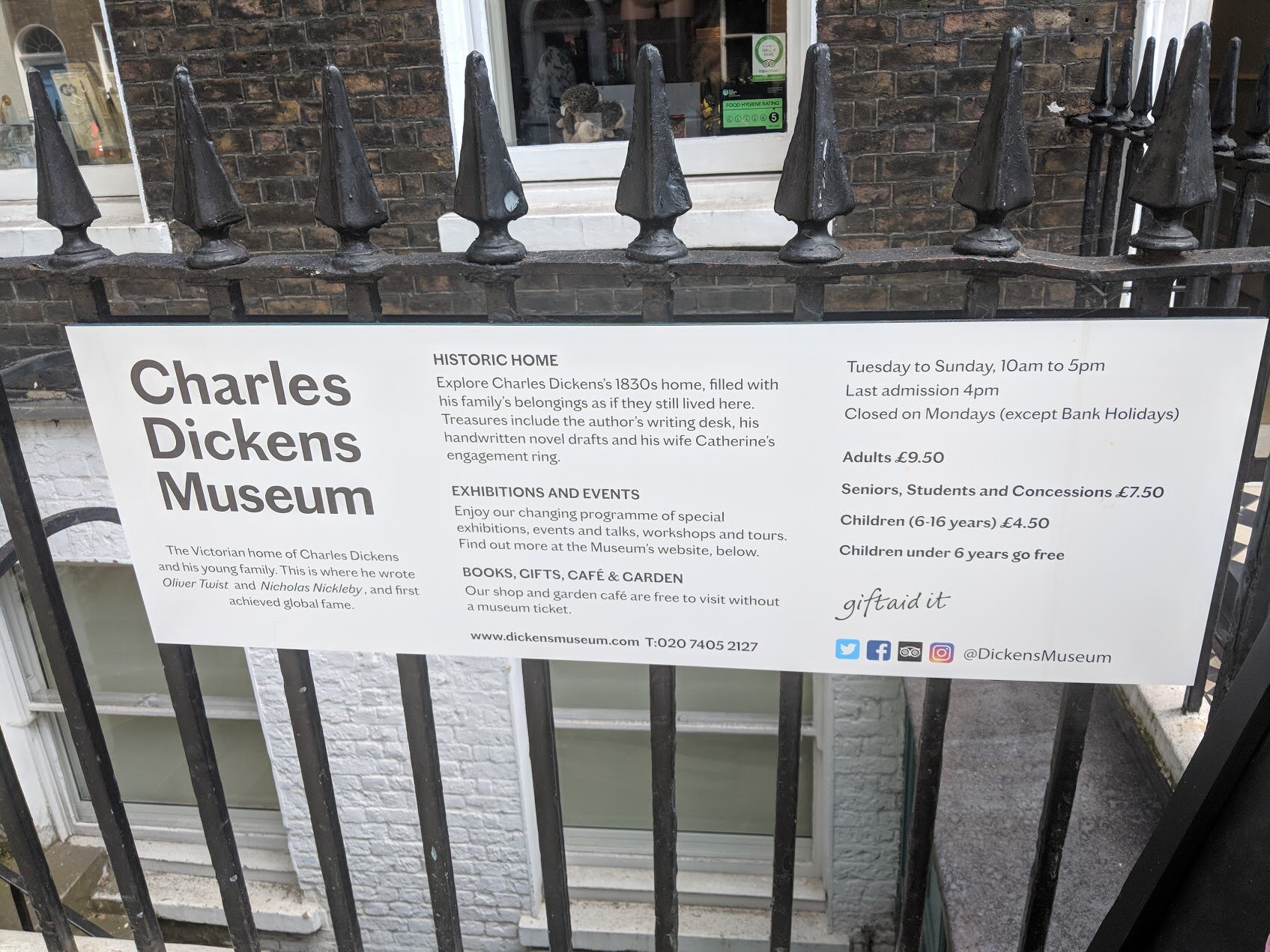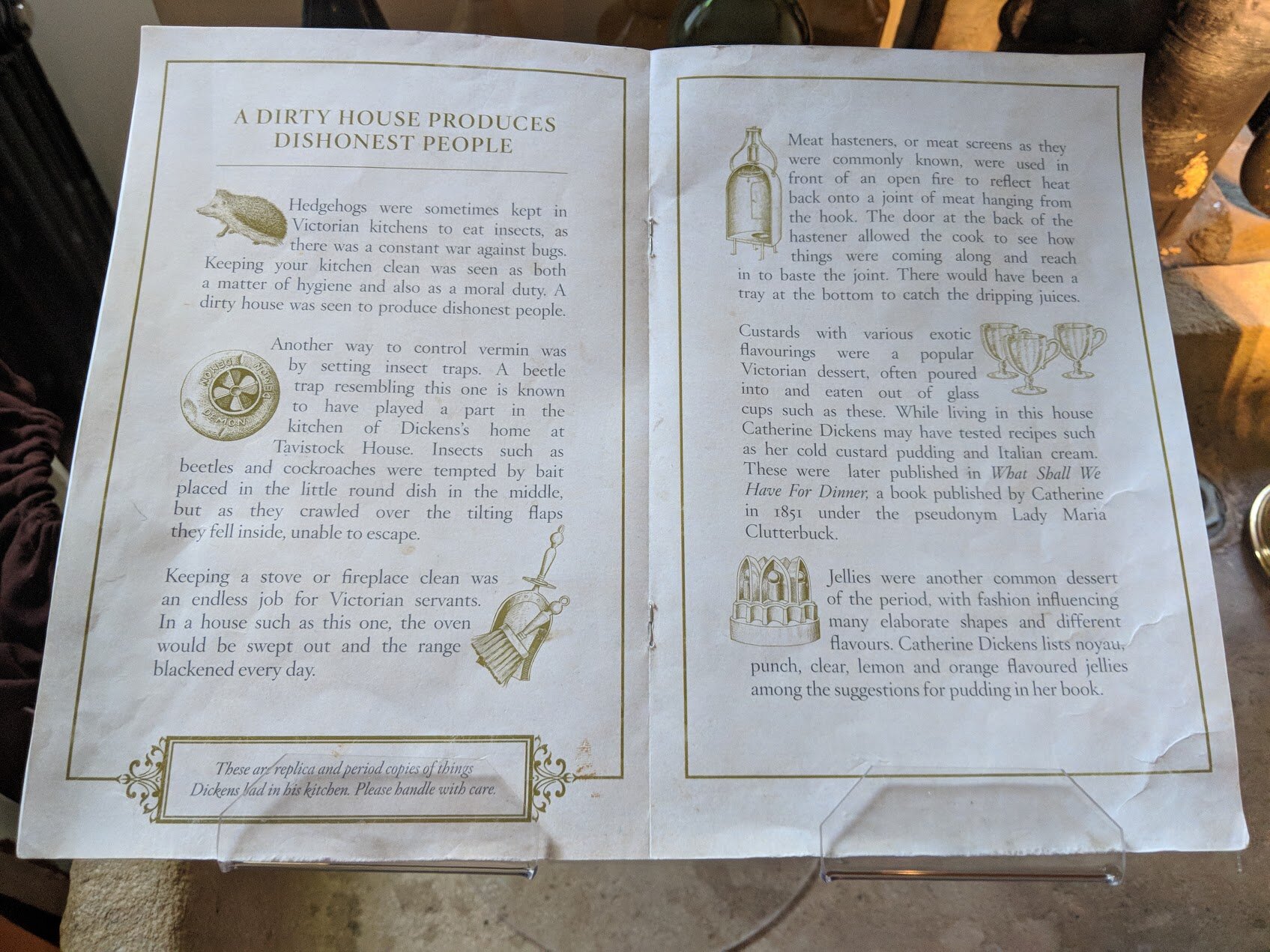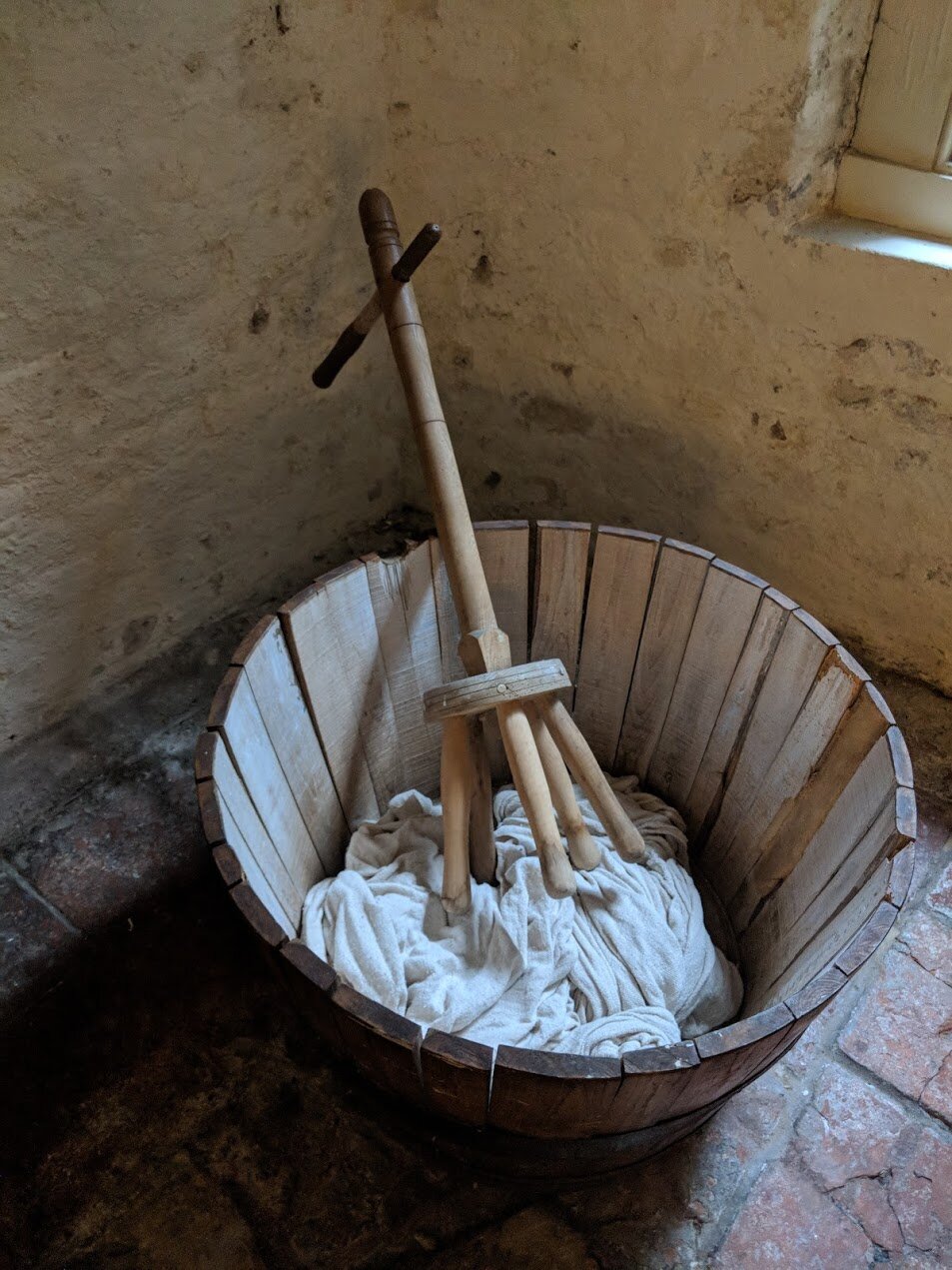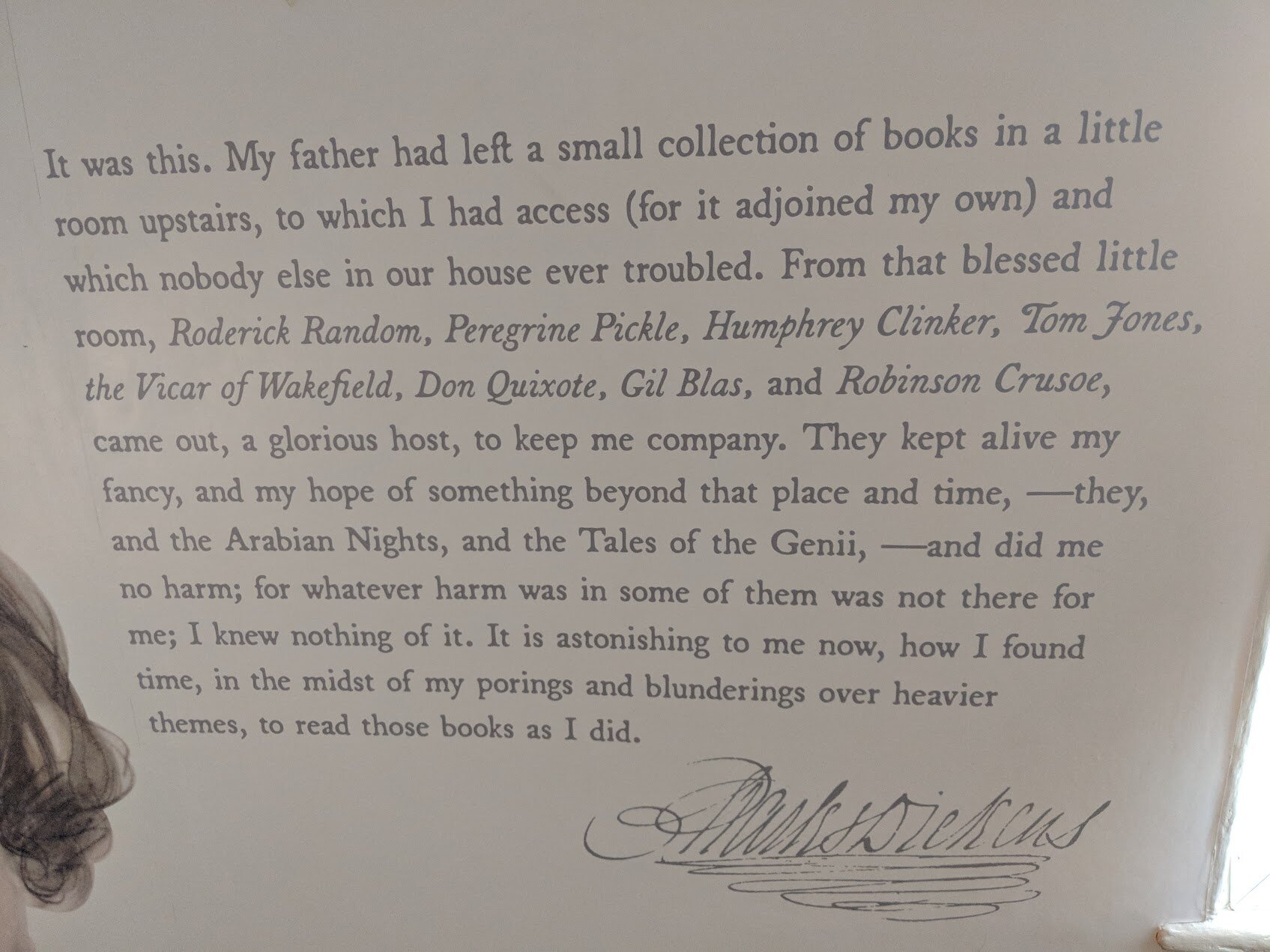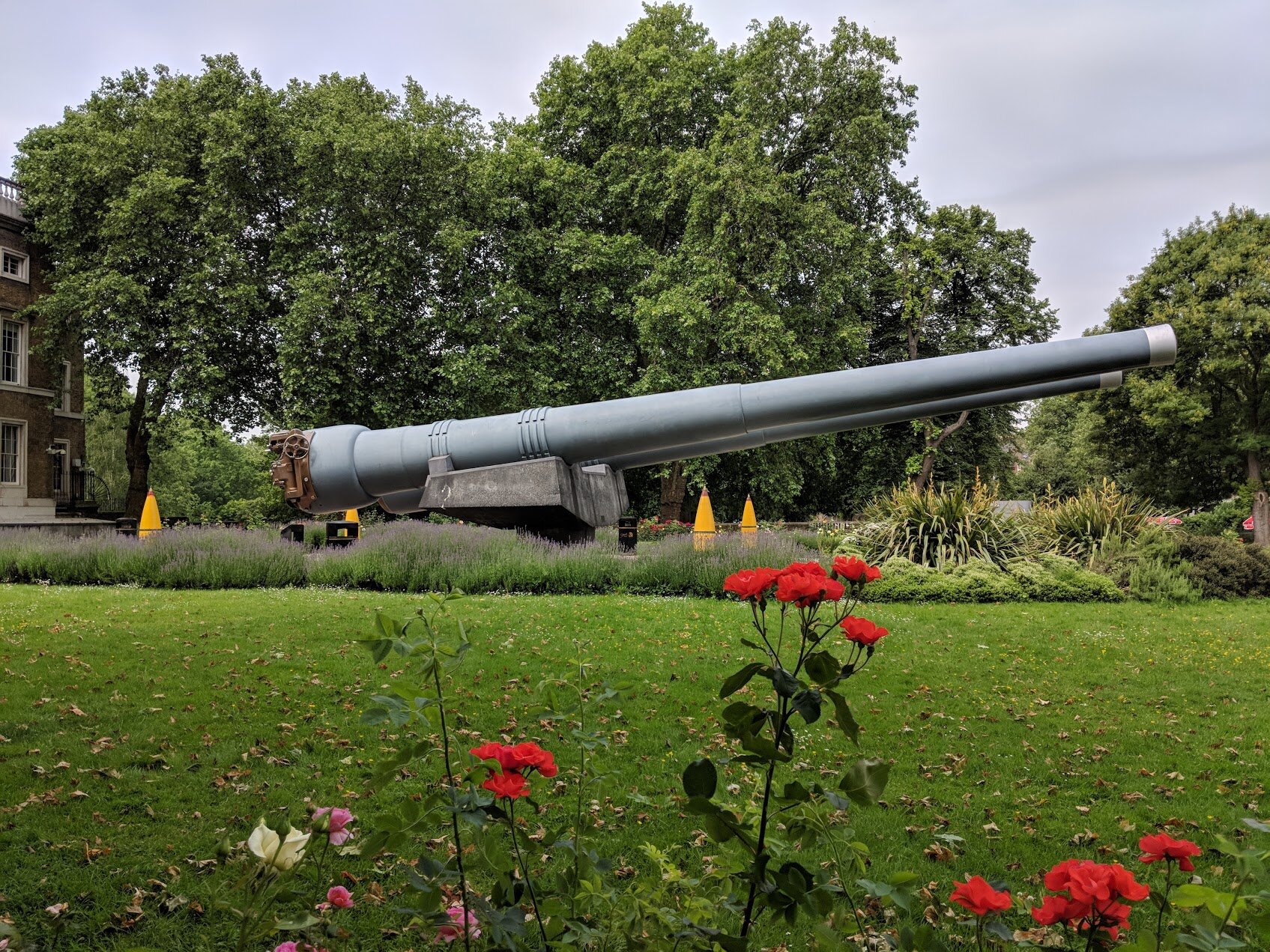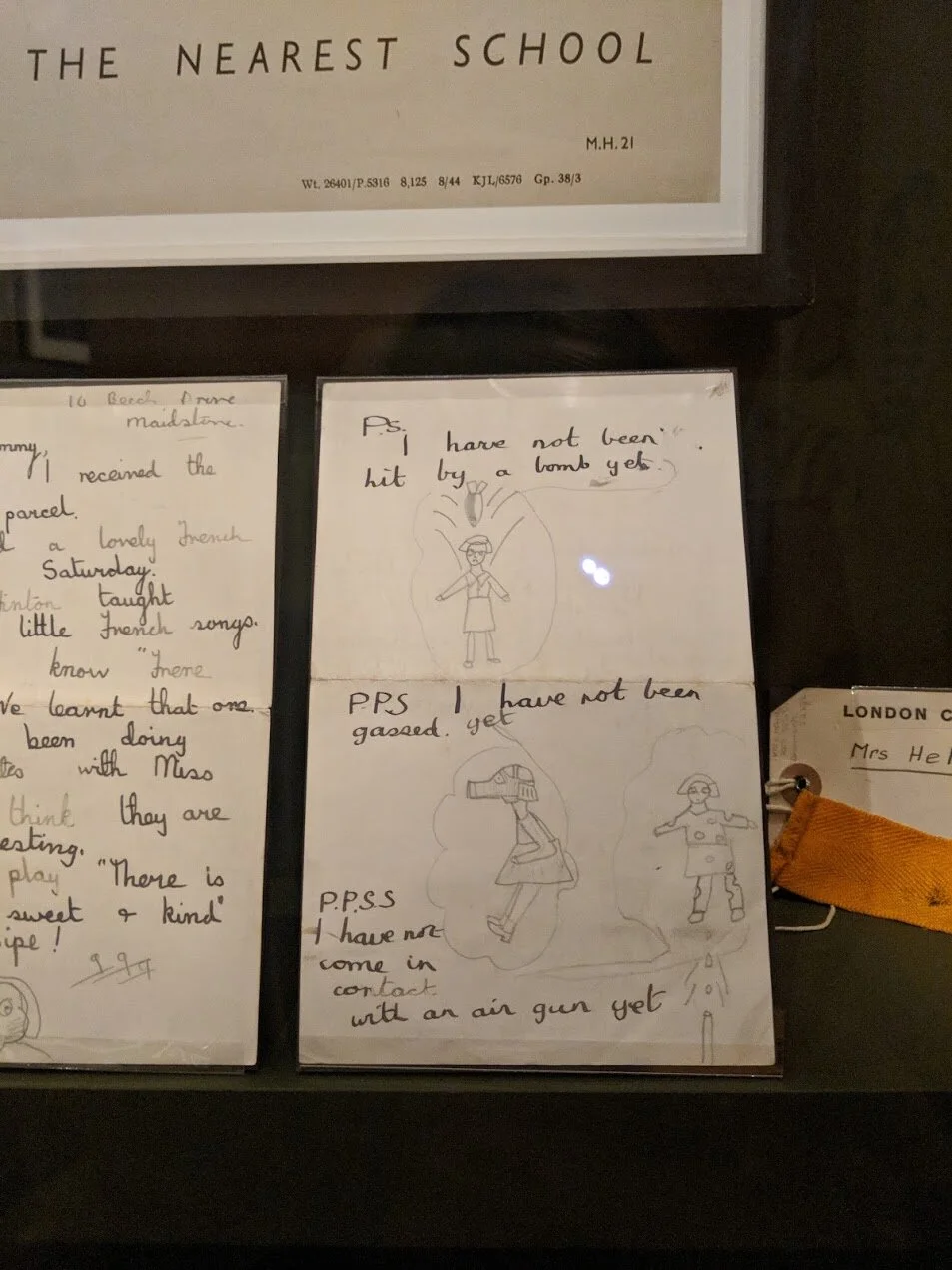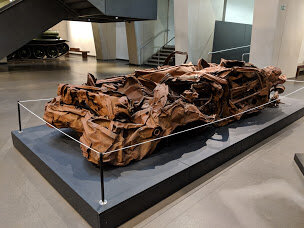On my final day in London, I headed out early to maximize my final hours in the city. I grabbed a quick latte and muffin at Starbucks and saw this mural. I love her sass and wonder if she is based on a real person? Is she someones grandma?
In front of the Charles Dickens Museum, I found blue markers to honor literary luminaries.
Charles Dickens rented this London residence at 48 Doughty Street from 1837-1839. Dickens and his wife, Catherine, raised their eldest three children here and this is where he wrote three of his most successful novels: Oliver Twist, Nicholas Nickleby, and The Pickwick Papers.
I arrived when the museum opened and paid my 9.50 pound entry fee. The museum is small and can be toured in less than an hour. They do have a garden cafe, but I did not visit it. I toured during a quiet morning and I was mostly alone during my visit.
Even if you have zero interest in Dickens, this home is a great example of life during the victorian era. It has been restored and each room showcases the lifestyle of not only the Dickens family, but of how other upper-middle class families of the era would have lived. Dickens lived here during a successful part of his career and loved to throw dinner parties that included artists and thinkers of the time. It was quite the social butterfly!
The first level of the house contains a living room, dining room, kitchen, and wine cellar.
The second floor of the home contains the bedrooms, nursery, parlor/study, and dressing room. During their time here, Dickens’ teenage sister-in-law, Mary, came to live with them. Mary and Dickens were very close and she died in his arms, after a short illness. He struggled after her death and even fell behind on his publishing commitments.
Charles Dickens’ writing desk aka “where the magic happened.”
Various editions of Dickens’ novels.
One room was filled with quotes from Dickens’ stories. How many do you recognize?
The final part of the museum contained additional information about Dickens, such as his passion for learning. Dickens was fascinated by science, mysticism, medicine, and mesmerism. These ideas often found their way into his stories. There was a model of the “Pepper’s Ghost” illusion, which if you’ve been to a Disney park, is used in the Haunted Mansion ballroom scene.
Poverty is at the center of many of Dickens’ novels. He faced this issue as a child, when his father, John, was sent to Marshalsea Prison for being a debtor. This situation forced Dickens to begin working at twelve, including a job at Warren’s Blacking Factory. This trauma influenced not only his writing, but also prompted Dickens to spend his life champion causes to help improve equality with regard to race, sex, and economics. Despite his adulthood success, Dickens was profoundly affected by his childhood.
Lastly, a piece of not only my least favorite Dickens’ novel, but the required reading of my high school years that I detested the most. Truth be told, I enjoyed most of the required reading, but I did not enjoy A Tale of Two Cities, which I read in Mr. Duffield’s 10th grade AP World History class. Oh, how I hated A Tale of Two Cities!
If you’re a Dickens fan, book lover, or just want to see a really beautiful victorian home, I highly recommend a trip to the Charles Dickens Museum. As a bonus, it is located in a lovely neighborhood, which I also recommend taking the time to explore.






